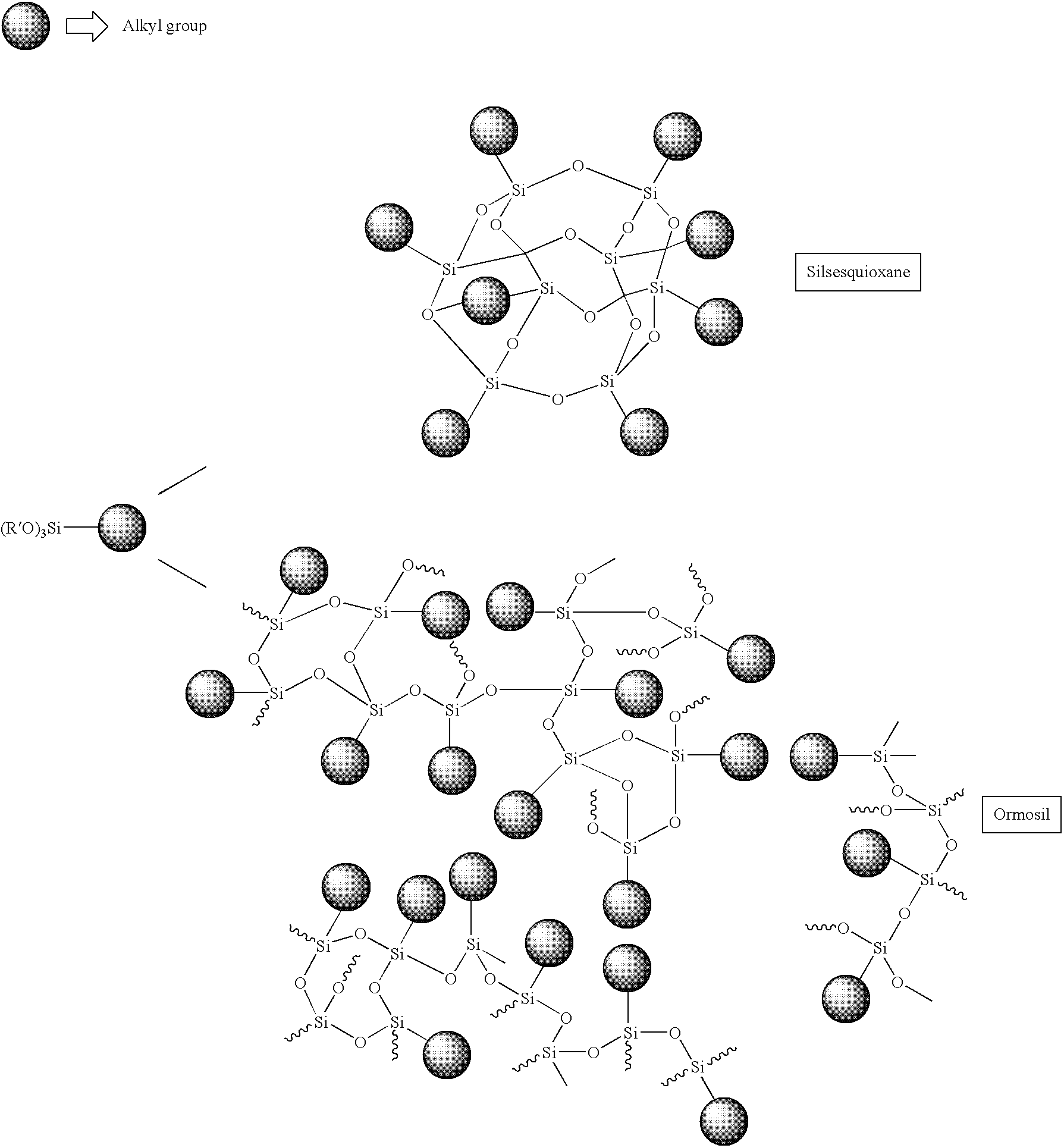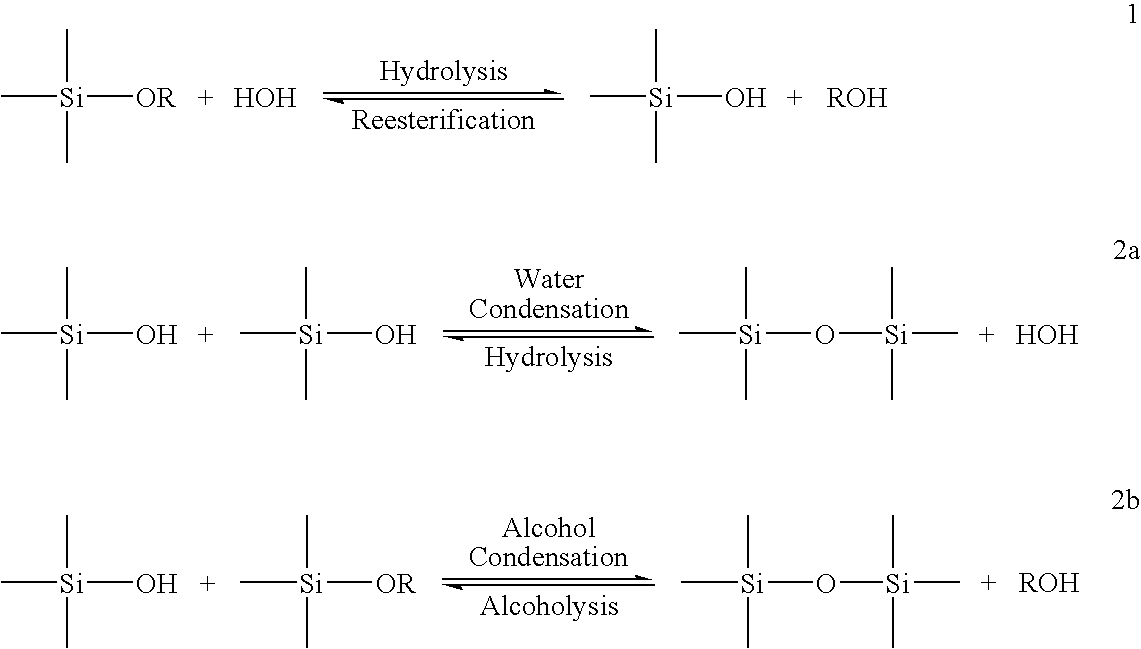Method of Making a Surface Hydrophobic
- Summary
- Abstract
- Description
- Claims
- Application Information
AI Technical Summary
Benefits of technology
Problems solved by technology
Method used
Image
Examples
example 1
Coating Composition Capable of Forming a Hydrophobic Coating Having a Nanoscale Roughness
[0139]Mix 100 g methyltrimethoxysilane (MTMS), 10 to 200 g hydroxy terminated polydimethylsiloxane (PDMS), 50 to 150 mL ethyl acetate and stir the mixture at 60° C. for 3 to 6 hrs. The mixture is then blended with 10 to 100 g of octyltriethoxysilane, 4 to 40 g of
(3-aminopropyl)trimethoxysilane and 1 to 5 g dibutyltin dilaurate (a catalyst).
[0140]This mixture may be stored in an airtight container (for example, a metal drum or bottle) for a number of months prior to use.
example 2
Coating Composition Capable of Forming a Hydrophobic Coating Having a Nanoscale Roughness
[0141]Methyltrimethoxysilane (MTMS), hydroxy terminated polydimethylsiloxane (PDMS), ethyl acetate and dibutyltin dilaurate (0.1%) were added in the amounts shown below to a large reaction vessel in an inert atmosphere. The mixture was then stirred and heated at 60° C. for 3 hours. Octyltriethoxysilane and 3-aminopropyltriethoxysilane were then added with stirring.
Material% (wt)Methyltrimethoxysilane45Polydimethylsiloxane (—OH term.)4.5Octyltriethoxysilane9ethyl acetate40Dibutyltin dilaurate0.53-Aminopropyltriethoxysilane1
[0142]The resultant coating composition may be stored in an airtight container (for example, a metal drum or bottle) for months. Further tin catalyst (0.4%) is added to the composition shortly before applying the composition to a microstructured surface. The mixture of the composition with the tin catalyst may be stored in an airtight container for up to a week prior to use.
example 3
Microstructured Surface Formation—Using Ceramic Materials
[0143]Mix 100 g of ethanol, 1 to 20 g of polyethylene oxide (mw˜1,000), and 200 g of clay particles or grindings (microparticle size) to form a slurry. Apply the slurry to a wet surface of a clay workpiece, and then leave the workpiece at room temperature for 3 days. Finally, cure the workpiece at 1100° C. for 24 hrs.
[0144]The coating composition described in Example 1 or 2 can then be applied to the microstructured surface of the ceramic workpiece and the coated workpiece is cured at room temperature for at least 12 hrs.
[0145]The surface of the ceramic work piece made by this process is extremely water resistant and exhibits a water contact angle of larger than 165°.
PUM
| Property | Measurement | Unit |
|---|---|---|
| Temperature | aaaaa | aaaaa |
| Temperature | aaaaa | aaaaa |
| Temperature | aaaaa | aaaaa |
Abstract
Description
Claims
Application Information
 Login to View More
Login to View More - Generate Ideas
- Intellectual Property
- Life Sciences
- Materials
- Tech Scout
- Unparalleled Data Quality
- Higher Quality Content
- 60% Fewer Hallucinations
Browse by: Latest US Patents, China's latest patents, Technical Efficacy Thesaurus, Application Domain, Technology Topic, Popular Technical Reports.
© 2025 PatSnap. All rights reserved.Legal|Privacy policy|Modern Slavery Act Transparency Statement|Sitemap|About US| Contact US: help@patsnap.com


